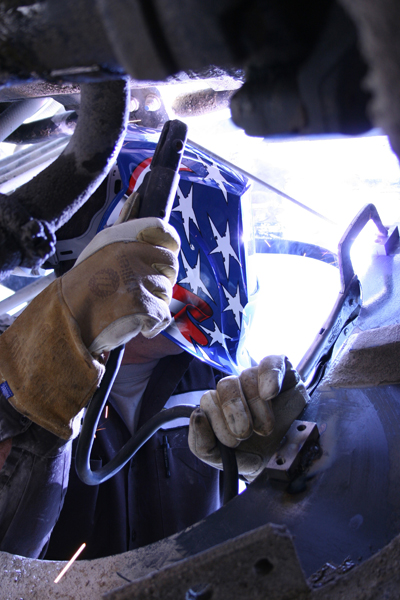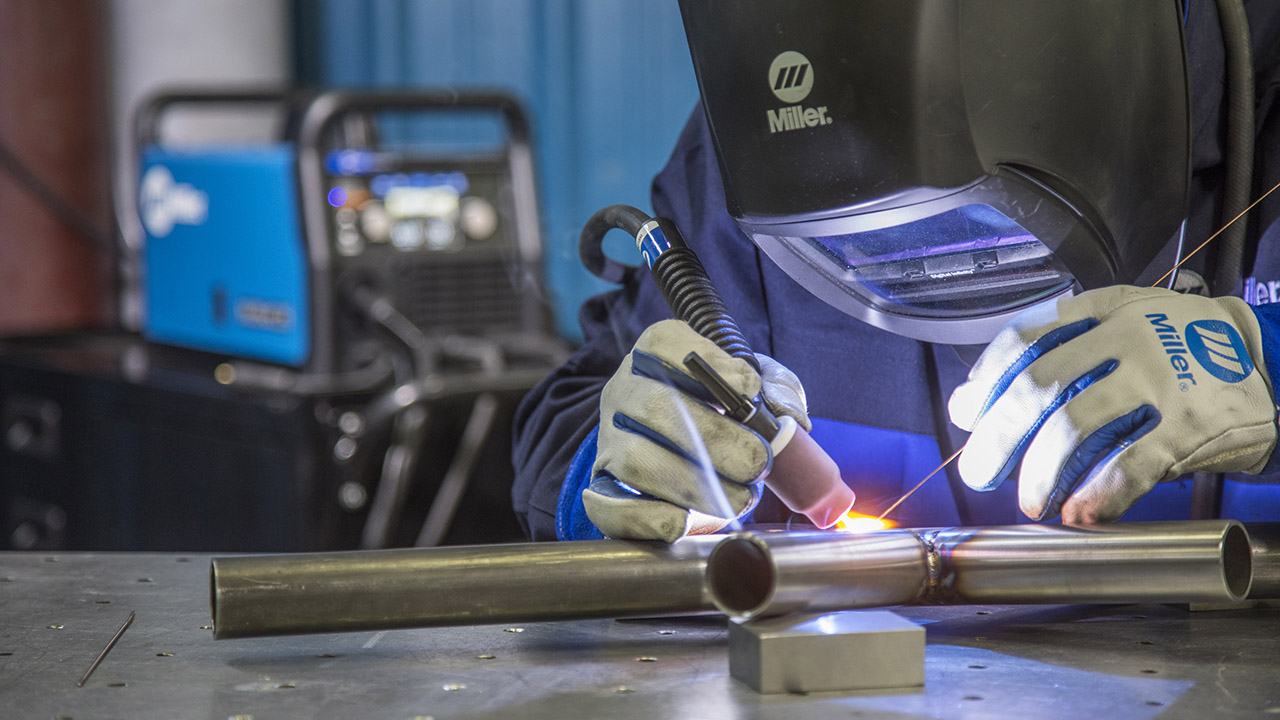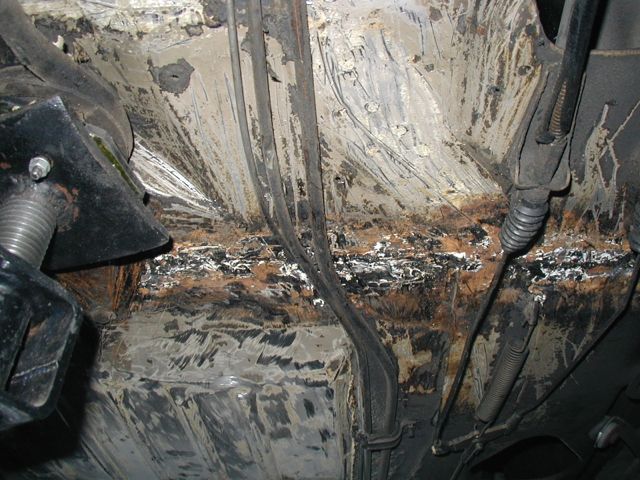Usual Welding Fixing Issues and How to Address Them Successfully
Welding repair services often encounter a series of issues that can endanger the stability of the last product. Common troubles consist of poor penetration, porosity, and imbalance, amongst others. Each defect offers distinct difficulties that need details approaches for resolution. Recognizing these problems is necessary for welders aiming to boost their skills and end results. This conversation will check out these usual welding fixing concerns and efficient approaches to address them.
Inadequate Penetration
Insufficient penetration occurs when the weld steel falls short to completely fuse with the base product, resulting in weak joints and possible architectural failings. This concern usually stems from insufficient warmth input, incorrect electrode angle, or incorrect welding rate. Welders might experience inadequate penetration due to a miscalculation of the essential criteria for a details product density or kind. Additionally, contamination on the base product's surface can prevent efficient bonding, intensifying the issue. To address poor penetration, welders must assure ideal setups on their equipment and keep a tidy job surface area. Routine examination of welds is advised to recognize any deficiencies early, allowing for timely modifications and the avoidance of compromised architectural integrity in bonded assemblies.
Porosity
Porosity is a typical defect in welded joints that shows up as tiny gas bubbles entraped within the weld metal. This issue can endanger the honesty of the weld, causing minimized stamina and prospective failing under stress and anxiety. Belgrade. Porosity generally develops from contamination, wetness, or inappropriate welding strategies, which permit gases to leave right into the molten weld swimming pool. To resolve porosity, welders need to guarantee appropriate surface preparation, maintain a clean functioning environment, and make use of appropriate welding specifications. In addition, selecting the ideal filler material and securing gas can mitigate gas entrapment. Normal inspection and testing of welds can help recognize porosity early, ensuring prompt corrective actions are taken, consequently preserving the high quality and integrity of the bonded structure
Imbalance
Misalignment in welding can arise from numerous variables, including incorrect setup and thermal growth. Recognizing the origin is vital for reliable resolution. A number of adjustment techniques are offered to realign parts and guarantee architectural honesty.
Reasons for Misalignment
Welding imbalance often stems from a range of underlying problems that can compromise structural honesty. One main cause is inappropriate fit-up of elements before welding, which can lead to spaces and irregular surfaces. Variants in thermal growth throughout the welding procedure can also result in distortion, especially if the products being joined have different coefficients of growth. In addition, poor fixturing and clamping may stop working to hold elements firmly in position, resulting in activity throughout welding. Poorly kept equipment, including welding equipments and devices, might present incongruities in the weld grain, more adding to misalignment. Operator error, stemming from inadequate training or experience, can additionally play a considerable function in producing misaligned welds.

Correction Techniques Available
Resolving misalignment successfully calls for a combination of rehabilitative techniques tailored to the certain concerns at hand. One typical technique is making use of jigs or components to hold elements in the right setting throughout welding, making sure regular alignment. Additionally, preheating the materials can assist reduce distortion and enhance fit-up. For considerable misalignment, mechanical adjustment strategies, such as using hydraulic jacks or clamps, can be used to remedy the placement prior to welding. Post-weld warm treatment might also be required to alleviate tensions triggered by misalignment. Finally, cautious evaluation and adjustment during the configuration phase can prevent misalignment concerns from ending up being substantial troubles, promoting a smoother welding procedure and boosting overall architectural honesty.
Distortion
Distortion is an usual obstacle in welding that can arise from different aspects, consisting of unequal heating & cooling. Understanding the causes of distortion is important for applying reliable prevention strategies. Addressing this issue not just improves architectural integrity yet additionally enhances the overall quality of the weld.
Reasons for Distortion
When subjected to the extreme heat of welding, materials typically go through changes that can lead to distortion. This sensation primarily arises from thermal expansion and tightening during the welding process. As the weld area warms up, the material expands; upon air conditioning, it gets, which can produce inner anxieties. Additionally, unequal heating throughout a work surface can exacerbate these anxieties, leading to warping or bending. The kind of product likewise plays a significant duty; metals with differing thermal conductivity and coefficients of expansion might respond differently, causing unforeseeable distortions. Poor joint style and insufficient fixturing can contribute to misalignment during welding, boosting the possibility of distortion. Comprehending these reasons is crucial for efficient welding fixing and prevention techniques.
Prevention Techniques
Reliable prevention techniques for distortion during welding focus on regulating warmth input and guaranteeing proper joint layout. Keeping a consistent warm input aids to decrease thermal growth and contraction, which can result in distortion. Using methods such as pre-heating the workpiece can additionally decrease the temperature gradient, promoting uniform home heating. Furthermore, choosing proper joint designs, such as T-joints or lap joints, can boost security and minimize stress concentrations. Implementing correct fixturing to secure primeweld 225x the workpieces in position even more aids in preserving alignment throughout the welding procedure. Staggered welding sequences can distribute warm a lot more evenly, stopping localized distortion. By using these methods, welders can greatly lower the probability of distortion and enhance the overall top quality of their welds.
Cracking
Splitting is a typical problem experienced in welding repair services, usually resulting from various elements such as incorrect cooling rates, product choice, or insufficient joint preparation. The event of cracks can substantially compromise the integrity of the weld, leading to prospective failures throughout operation. To resolve this issue, welders should initially analyze the origin, guaranteeing that materials are suitable and properly selected for the particular application. Additionally, controlling the cooling price during the welding procedure is essential; quick air conditioning can induce tension and lead to breaking. Proper joint design and prep work additionally add to lessening the risk. Executing these techniques can enhance weld quality and resilience, inevitably minimizing the likelihood of cracking in ended up weldments.

Insufficient Combination
A considerable issue in welding repairs is insufficient combination, which happens when the weld steel does not appropriately bond with the base product or previous weld passes - Belgrade Fabrication. This problem can cause weaknesses in the joint, possibly jeopardizing the integrity of the bonded structure. Factors contributing to insufficient combination include insufficient this page warmth input, improper welding technique, and contamination of the surface areas being joined. To resolve this problem properly, welders ought to guarantee correct pre-weld cleansing and surface area prep work, along with adjust their welding criteria to achieve adequate penetration and combination. Normal evaluation during the welding process can likewise help determine incomplete combination early, enabling for timely rehabilitative steps to enhance the overall high quality of the weld
Overheating
While welding fixings can improve architectural integrity, overheating provides a considerable obstacle that can cause material degradation. Extreme warm throughout welding can alter the mechanical residential or commercial properties of steels, leading to reduced strength, increased brittleness, and warping. This sensation is specifically important in high-stress applications where structural integrity is paramount. Identifying overheating can entail aesthetic inspections for staining or distortion, in addition to keeping an eye on temperature level during the welding process. To reduce the risks associated with overheating, welders need to utilize appropriate techniques, such as managing warmth input, changing travel rate, and using ideal filler materials. Furthermore, implementing pre- and post-weld heat treatments can help restore product properties and boost the overall quality of the repair work, ensuring long-lasting performance and safety and security.
Often Asked Inquiries
What Are the Usual Signs of a Welding Defect?

How Can I Check My Welds for Quality?
To test welds for high quality, one can utilize aesthetic evaluations, ultrasonic screening, and radiographic approaches. Each strategy assures structural integrity, identifies issues, and confirms adherence to defined standards, inevitably improving the integrity of the welded joints.
What Security Precautions Should I Take While Welding?
When welding, one need to focus on safety and security by wearing ideal personal safety equipment, ensuring proper air flow, securing flammable materials away, keeping he has a good point a tidy workspace, and knowing surroundings to stop injuries and accidents.
Can I Repair a Weld Without Renovating the Entire Joint?
Fixing a weld without renovating the entire joint is feasible, relying on the damage (Montana Mobile Welding and Repair Belgrade). Techniques such as grinding, including filler material, or making use of a welding procedure can properly resolve certain flaws while maintaining the surrounding structure
What Tools Are Crucial for Efficient Welding Services?
Crucial devices for reliable welding repair work include a welding device, wire brush, grinder, safety gear, clamps, and filler products. Each device plays a crucial duty in making sure high quality and security during the repair procedure. Porosity commonly emerges from contamination, wetness, or incorrect welding strategies, which allow gases to get away right into the liquified weld swimming pool. Inadequately conserved devices, consisting of welding machines and tools, may present incongruities in the weld grain, more adding to misalignment. When subjected to the extreme warm of welding, materials commonly undertake changes that can lead to distortion. Cracking is an usual problem come across in welding repairs, commonly resulting from numerous elements such as inappropriate air conditioning rates, product selection, or poor joint prep work. A significant issue in welding repairs is insufficient fusion, which happens when the weld metal does not effectively bond with the base product or previous weld passes.